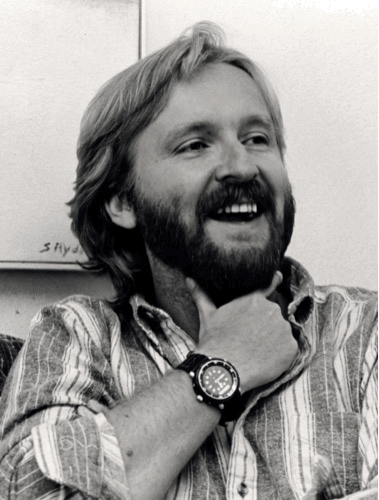
“
I’m Canadian, and I’m proud of it. I think there’s a certain sensibility that comes from growing up in Canada, a certain humility and appreciation for nature.
Throughout his life and career, James Cameron’s work and contributions have been anchored in two grand themes : a love for what’s above us, and a love for what’s below us. Outer space and the deep sea are recurring themes in his life and work, both philanthropic and professional.
Born in Kapuskasing, Ontario in 1954, he left Canada as a teenager when his family moved to California. He studied physics briefly but dropped out, drawn instead to the emerging world of special effects and visual storytelling.
Cameron’s start in the creative industry was marked by a passionate pursuit of his craft and interest in visual effects. For a decade, he worked as a modelmaker and developed effects for Hollywood movies while teaching himself the trade and continuously experimenting to push the boundaries of what was possible.
His first big break as a screenwriter and director came in 1984’s The Terminator (starring Arnold Schwarzenegger and Linda Hamilton). Cameron was relatively unknown in Hollywood at the time, and convincing a studio to fund the movie’s production was an uphill battle. Ultimately, it was a significant commercial success—spawning six movies and a globally-recognized creative franchise.
Also known for blockbuster films such as Titanic and Avatar, Cameron is less well known for his spirit of serial entrepreneurship and his contributions to the technological evolution of filmmaking and immersive experiences. His first venture, Lightstorm Entertainment (now Lightstorm Vision), was founded in 1990 with partner Lawrence Kasanoff and became the vehicle for production of his most successful films (and has scheduled releases into the 2030s).
Other ventures Cameron founded or co-founded include Digital Domain (an advanced special-effects studio), Earthship Productions (production and streaming delivery of documentaries about the ocean), Cameron Pace Group (which developed the Fusion Camera System for precise stereoscopic filming), and a collaboration with National Geographic and Rolex to design and build the Deepsea Challenger bathyscaphe—which Cameron piloted to the bottom of the Mariana Trench in 2012, becoming the first person to dive to the region on a solo expedition.
All of Cameron’s ventures have had a significant impact on cinema. In addition, his environmental and science advocacy work has expanded his influence far beyond film. He’s a former National Geographic Explorer in Residence, and created the Avatar Alliance Foundation which works to support environmental sustainability and combat climate change (focusing particularly on issues related to ocean ecosystems).
Cameron also served as a member of the NASA Advisory Council and collaborated with the Jet Propulsion Laboratory on developing camera systems intended for the Mars Curiosity Rover. He even trained for a spaceflight aboard the space shuttle Columbia, but ultimately declined (an eerie twist, as the 2003 mission ended in tragedy).
The life and accomplishments of James Cameron are a powerful reminder that the heart of a builder can’t be chained by circumstance. If someone from modest beginnings in small-town Canada can leave such a lasting mark on the world, so can you.

